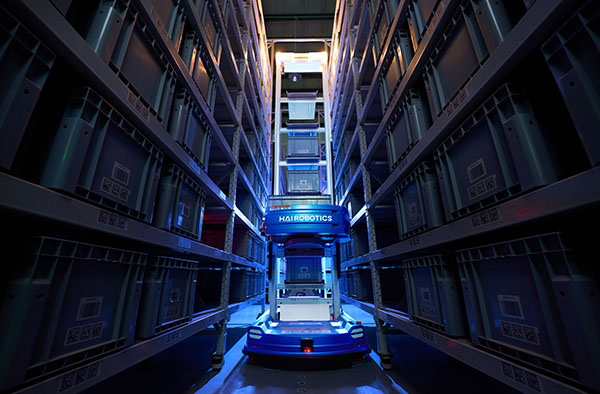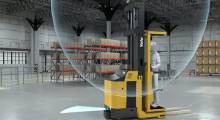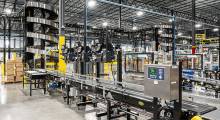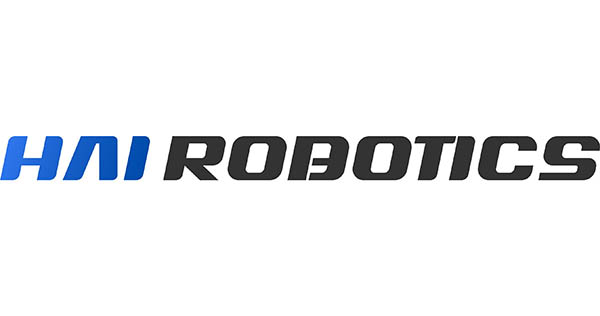WINIT is a Shanghai-based, cross-border warehouse operator. It has deployed about 100 robots in one of its facilities in Birmingham, U.K. The logistics robots move around the 30,000-sq.-ft. warehouse without any confusion, helping workers pick and sort goods.
The HAIPICK A42 systems from HAI Robotics helped improve the efficiency with which goods are handled by nearly fourfold compared with manual work. The robots handle nearly 50,000 pieces daily, said the company.
Such gains are becoming more common as more warehouses and logistics settings adopt automation. Along with e-commerce fulfillment centers and huge distribution centers, warehouses are busier than ever since the height of the COVID-19 pandemic.
As the tempo of e-commerce increases, so has demand for supply chain efficiency and resilience. This is driving the development of smarter and capable robots to move goods.
Logistics robot ecosystem builds
While some warehouses have automated, plenty still have not, according to research conducted by M14 Intelligence on the future of robotics in the warehouse.
“More than 80% of the warehouses today have no automation whatsoever,” stated the analyst firm in mid-2021. “However, since last decade, about 15% of the warehouses are being mechanized, while only 5% are using sophisticated automation equipment and solutions. This brings immense market opportunities for the companies in the warehousing automation ecosystem.”
M14 went on to say that it expected the market for warehouse automation to grow by a factor of 1.5 by 2025 and that it could reach $37.6 billion by 2030. The report calculated the compound annual growth rate (CAGR) between 2021 and 2030 to be about 10%.
“The adoption of autonomous mobile robots (AMRs), technology that eliminates significant nonproductive walking time in warehouses, has progressed from early-stage pilots about four years ago to multiple at-scale deployments today,” noted McKinsey & Co. in an article about omnichannel solutions. “The application of robotics and all its accompanying technology is soaring.”
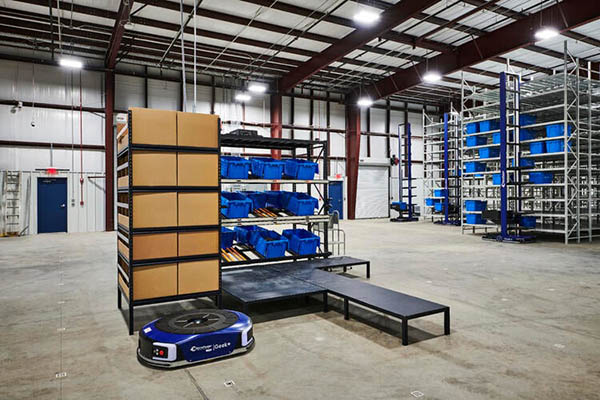
Geek+ robots work in C-StoreMaster warehouse
C-StoreMaster specializes in tobacco and beverage products, servicing more than 4,500 independent convenience stores and over 6,000 chain stores throughout the U.S. The company recently opened a 130,000-sq.-ft. automated distribution center in Huntsville, Ala.
The warehouse is outfitted with more than 82 robots from GeekPlus Technology Co., which specializes in smart logistics. Though the robots do much of the work, the new center has created 30 jobs as C-StoreMaster rapidly expands its distribution network.
“To bring the first multi-level shuttle system of its kind in the country to Huntsville is a great accomplishment for our team,” stated Sharan Kalva, president of C-StoreMaster. “Innovation has always been at the forefront of our business, and with this new warehouse, C-StoreMaster is set up for success for years to come.”
C-StoreMaster partnered with Geek+ to incorporate three automation technologies in its new warehouse, improving picking accuracy to 99.99%. The company has tripled to quadrupled its picking productivity, according to Rick DeFiesta, executive vice president of sales and solutions at Beijing-based Geek+.
In the warehouse design process, C-StoreMaster was vigilant of employees and their routines within the warehouse. The robots needed to eliminate the need to walk long distances or lift heavy goods for order fulfillment.
Freed from having to walk miles per day, workers can now enjoy amenities in the new facility including a workout area, a pool table, a air hockey table, and a track.
AI provides the brains of the operation
Not only are different types of logistics robots with disruptive capabilities coming to market, but they are also being designed to be easier to use. In some cases, supply chain automation is almost self-serve.
The software powering logistics robots increasingly involves complex algorithms to perform very precise tasks. The development of artificial intelligence can be quite challenging, but it can help robotics hardware adapt to unique warehouse environments and functions. After all, no two facilities are identical, even within a brand.
Recently, Cogniteam partnered with 634AI to further develop robotics AI and operational software. Cogniteam's Nimbus is a drag-and-drop platform to develop, analyze, and manage robot fleets in real time.
Nimbus contains a library of algorithms that enable robots to map, navigate, and make decisions autonomously, said the Petah Tikva, Israel-based company. The platform's plug-and-play feature allows operators to auto-configure the AI and expedite the time to using it in AMRs.
634AI, a subsidiary of SIXAI, developed MAESTRO, a proprietary, AI-powered, centralized “control tower” that harmonizes indoor operations. The Kfar Saba, Israel-based company said MAESTRO is part of its information management-as-a-service (IMaaS) offering, which allows for administration of essential operational infrastructure.
By effectively managing the delivery of services and data with AMRs and AI, respectively, warehouse operators can improve their safety and productivity, said 634AI. Cogniteam and 634AI said the combination of their technologies is suitable for logistics applications where the role of robots varies.
Nimbus helps expedite robot operations by supplying an ecosystem for development, deployment, and management with cloud connectivity. It melds well with MAESTRO, which is targeted at transforming industrial spaces, claimed the partners.
The unified and modular offering allows customers to coordinate the operations of anything mobile, said Cogniteam and 634AI. This includes real-time safety alerts for human-driven vehicles or navigating AMR fleets through busy warehouses.
Translating a vision with logistics robots
The addition of logistics robots will be instrumental to the success of many corporate strategies in the near term, particularly for retailers, according to McKinsey.
“Automation capabilities will play an influential role in the future size and scale of omnichannel networks,” it said. “To successfully navigate the many choices for automation, retailers must have an informed perspective on where automation can create value, reduce risk, and improve reliability across an increasingly complex network of fulfillment nodes.”
“Retailers should then use a three-step process—strategy, design, and implementation—to translate their vision into an optimal automated warehouse,” McKinsey said.
“Lights-out” or fully automated warehouses are still a ways off. Developers, integrators, and users should keep the idea of translating their visions into optimal automated warehouses in mind as robots continue to spread and offer more robust operations.
About the Author
Follow Robotics 24/7 on Linkedin
Article topics
Email Sign Up

